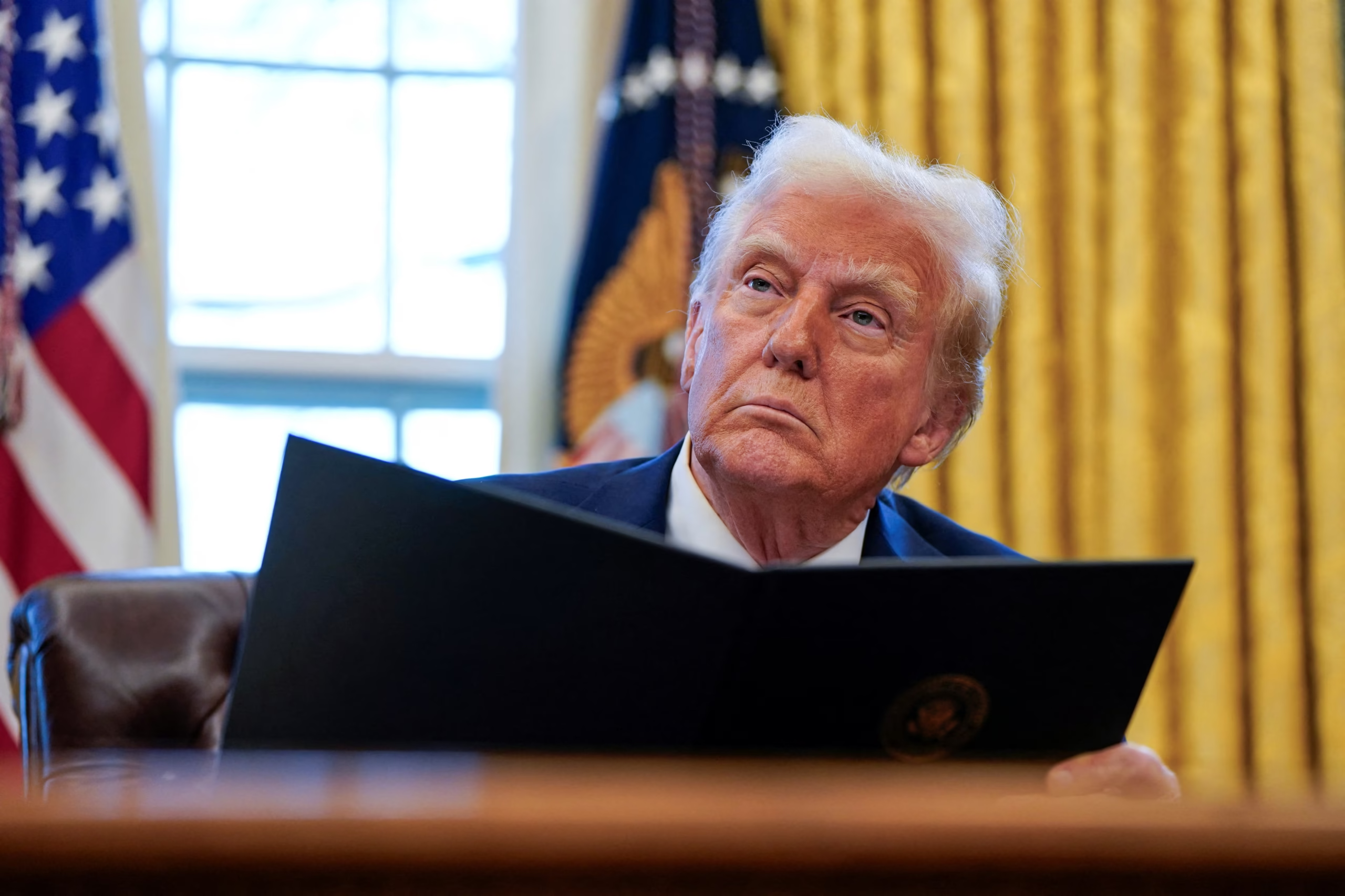President Donald Trump will move forward with aggressive new tariffs against Canada, Mexico and China on Saturday, the White House said, saying he will meet his Feb. 1 deadline for new tariffs that could have widespread effects on the economy.
“I can confirm that tomorrow continues the Feb. 1 deadline that President Trump put in place with a statement several weeks ago,” White House press secretary Karoline Leavitt said during Friday’s news conference.
Canadian officials are expected to meet with White House border chief Tom Homan on Friday in an attempt to reach a deal that would avoid the proposed tariffs, according to two sources familiar with the meeting.
But when asked later Friday in the Oval Office if Canada, Mexico and China could do anything to stop the tariffs from being implemented, Trump said, “No.”
The White House’s confirmation of the new tariffs appeared to end speculation about whether the president would follow through on a promise he made as a candidate to impose the new tariffs.
Leavitt said the tariffs would amount to a 25% tariff on Mexico and Canada and a 10% tariff on China “for the illegal fentanyl they have obtained and allowed to be distributed in our country, which has killed tens of millions of Americans.”
“These are promises made and kept by the president,” he said.
He did not provide any details on exactly how the new tariffs would be implemented, saying only that the fine print would be available for public inspection within the next 24 hours. He also declined to say whether they would apply to oil imports or whether additional exemptions would be included.
“We are going to eventually put tariffs on chips. We are going to put tariffs on oil and gas. That will happen fairly soon,” Trump said later in the day, suggesting “around” Feb. 18.
“We’re going to put tariffs on steel, aluminum and ultimately copper. Copper will take a little longer, but it will be produced quickly,” Trump said.
Trump also announced his intentions to impose tariffs on pharmaceuticals, calling it part of a broader strategy to revive American industries.
“We’re going to build a tariff wall to bring pharmaceuticals back to the United States,” he said. “The way to do that is to put up a wall — a tariff wall.”
Imposing significant tariffs on America’s major trading partners is a bet that taxing American companies on imported goods will ultimately punish countries that make the goods Americans want and bring those nations to the negotiating table. But it’s a risky bet that could easily backfire on American consumers and the economy.
“There could be some temporary, short-term disruption, and people will understand that,” Trump said when pressed by reporters on the cost of tariffs being passed on to consumers.
Earlier this week, Trump dismissed the idea of American consumers relying on imports from their two North American neighbors.
“We don’t need what they have,” Trump said, referring to Canada and Mexico.
Economists largely believe that under limited circumstances, tariffs can be effective tools for economic growth. Trump has used and promised to use tariffs for three main purposes: raising revenue, balancing trade and bringing rival countries to the negotiating table.
Trump has said he wants Canada and Mexico to stop the flow of undocumented immigrants and illegal drugs into the United States. And as for China, Trump said the tariffs would be aimed at forcing the country to live up to what he said was a stated promise he made to him that the government would execute people caught sending fentanyl to the United States.
Mexico’s president said Friday that her country was looking forward with “a cool head” to any potential U.S. tariffs.
“We have a Plan A, a Plan B and a Plan C for whatever the U.S. government decides. “It is very important that the people of Mexico know that we will always defend the dignity of our people, our sovereignty and we will dialogue as equals,” President Claudia Sheinbaum told reporters at the daily press conference.
“No one, on either side of the border, wants to see U.S. tariffs on Canadian products,” Canadian Prime Minister Justin Trudeau said Friday afternoon in a statement at X.
“I met with our Canada-U.S. Council today. “We are working hard to avoid these tariffs, but if the United States continues to
“And Canada is ready with a strong and immediate response,” he added.
A delegation of senior Canadian officials has been in Washington for several days, meeting with various administration officials to try to warn against the imposition of 25% tariffs. And Canada’s behind-the-scenes effort could turn into full-blown pressure if the levies go into effect. The premiers of all of Canada’s provinces, led by Ontario Premier Doug Ford, plan to travel to Washington on Feb. 12 for a larger mission.
Tariffs in certain circumstances do not cause inflation problems. Trump’s first-term tariffs did not significantly increase inflation, although they were far from expected.
